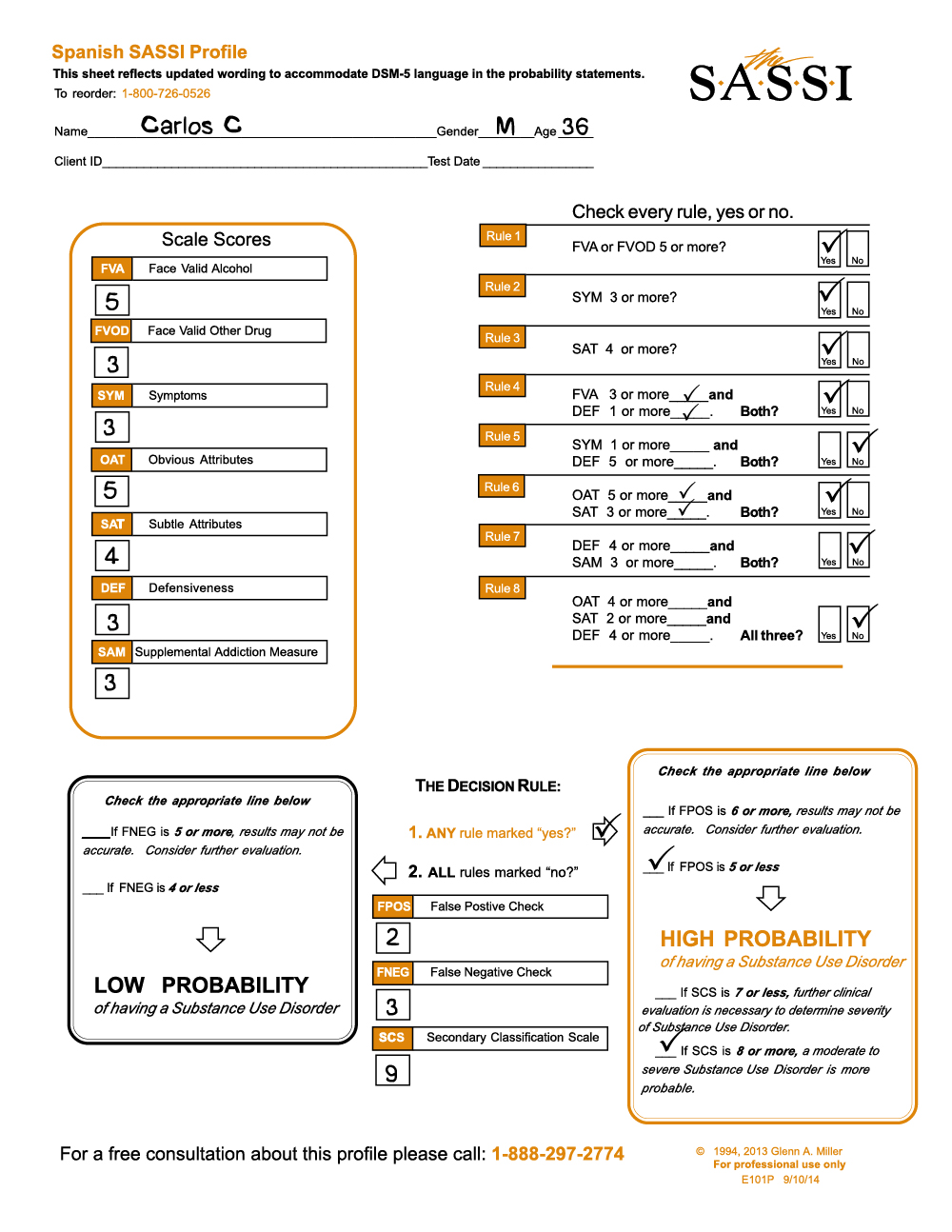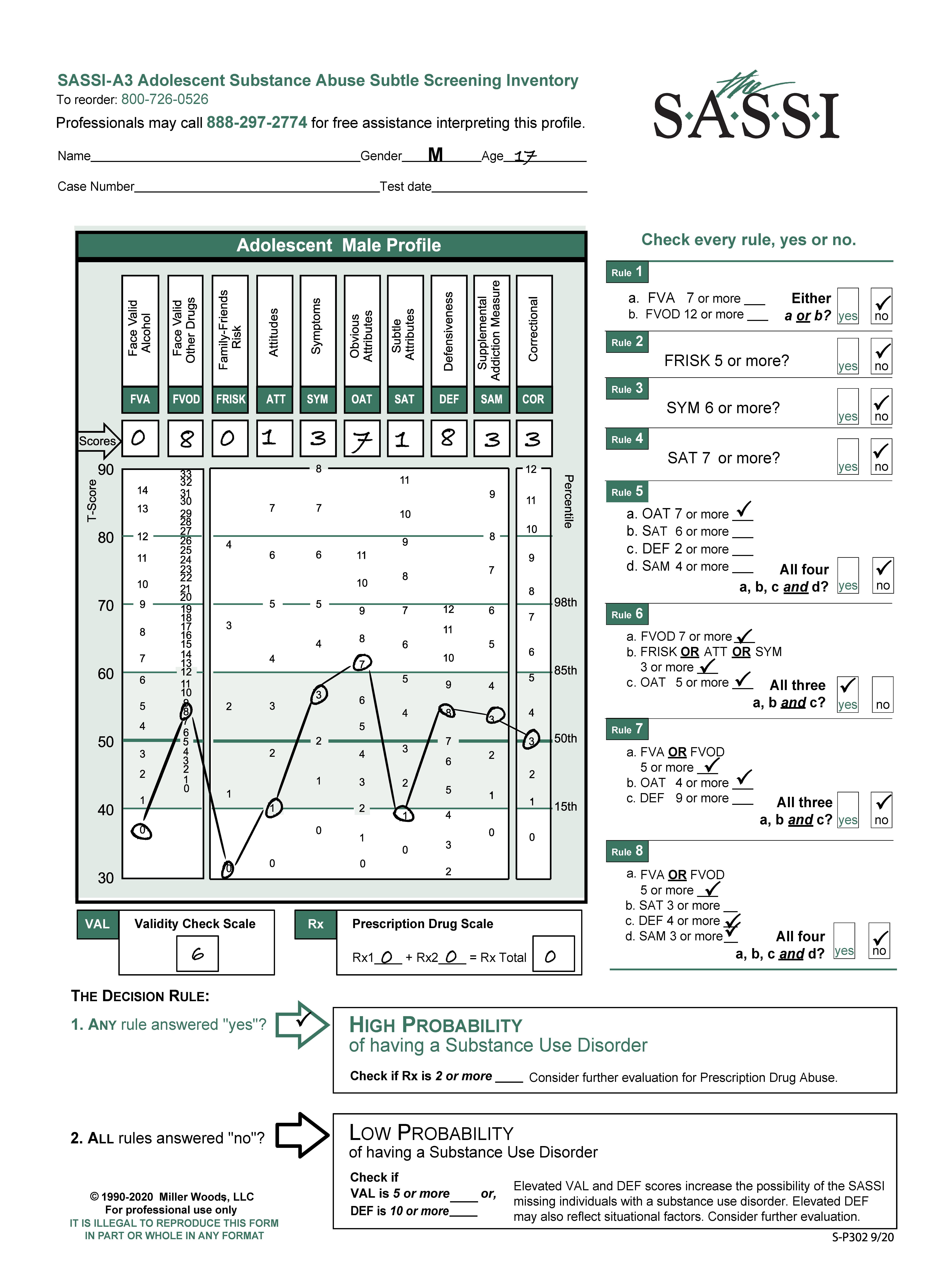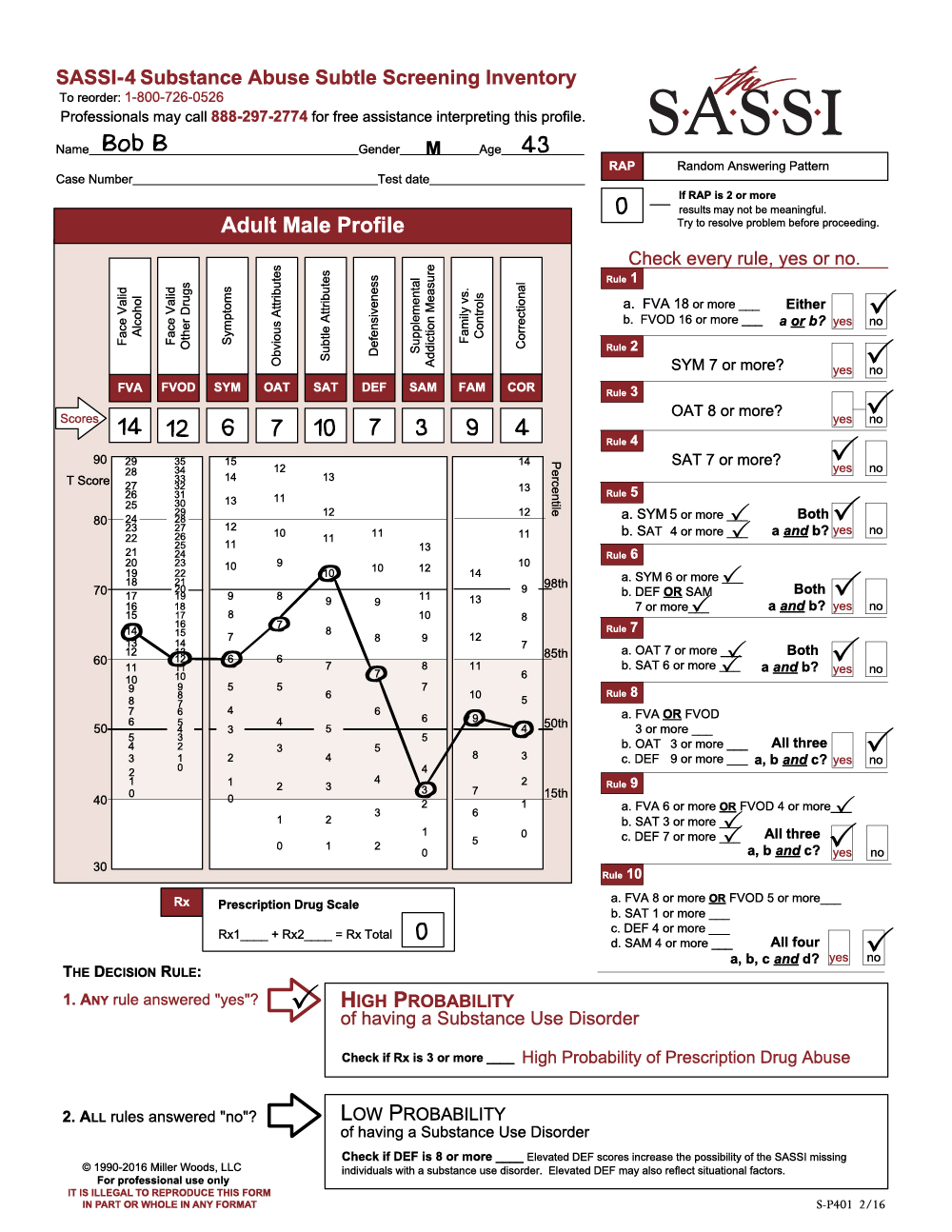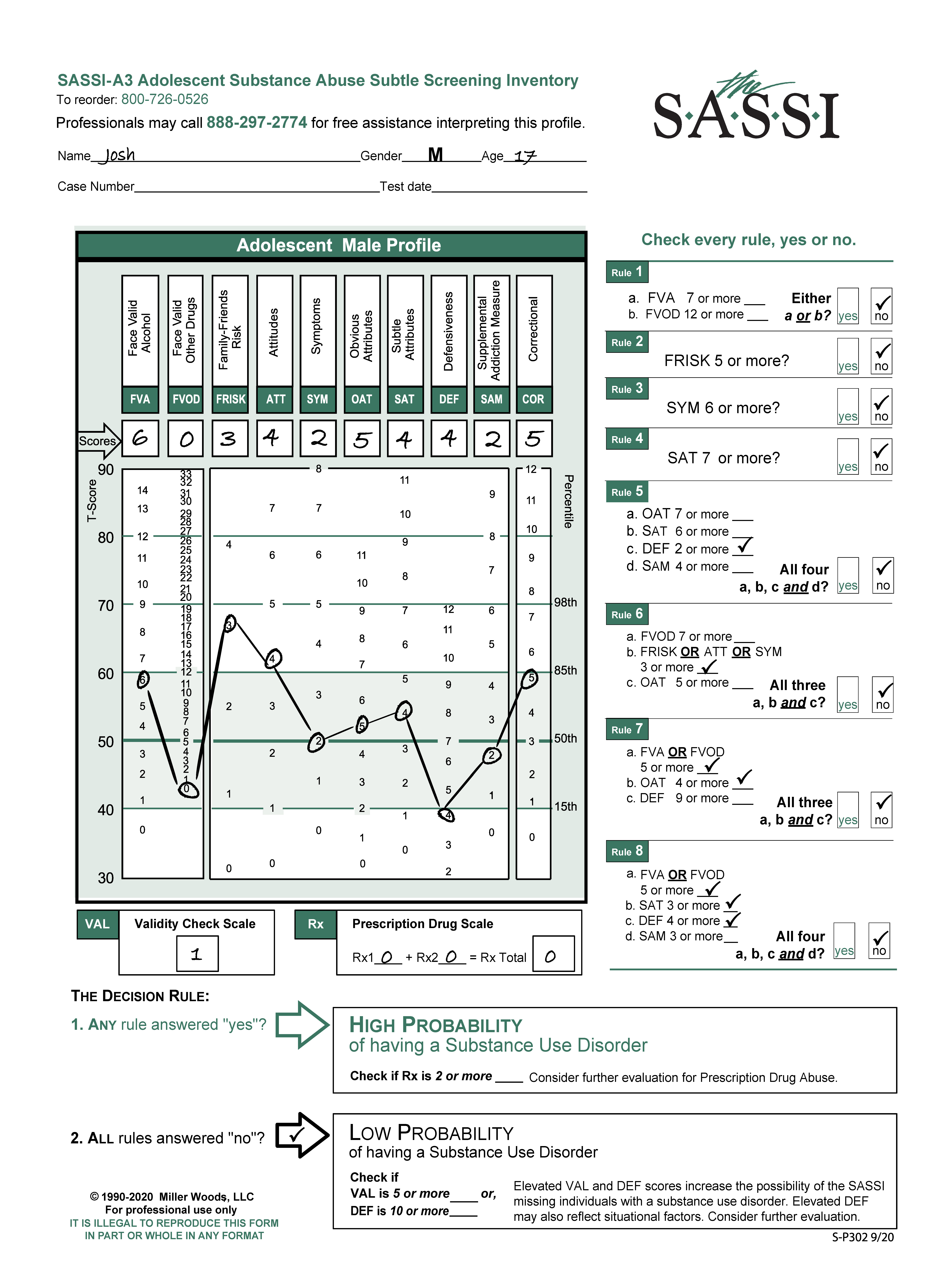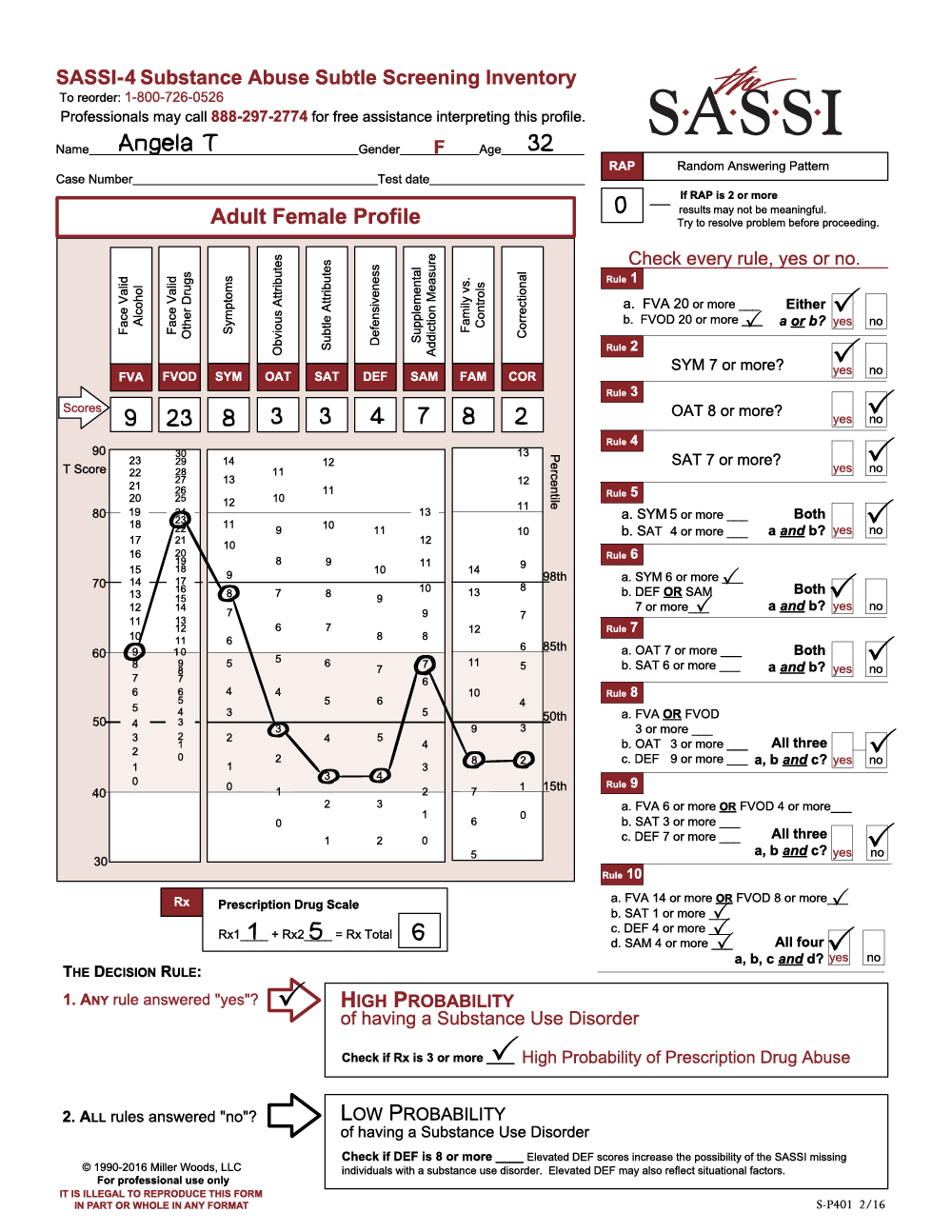Carlos C. is a 36-year-old Mexican-American male who’s Spanish SASSI results indicate that he has a high probability of having a substance use disorder based on “yes” answers to Rules 1, 2, 3, 4 and 6 and because his FPOS score is 5 or less (FPOS=2). Validation studies indicate that 86% of the people who have substance use disorders are correctly classified by the Spanish SASSI based on the Decision Rule (High Probability) and the False Positive Check (5 or less).
In addition, Carlos has an SCS score of 8 or more (SCS=9) indicating that he is more likely to have a substance dependence disorder than substance abuse. In validation studies, the majority of people (77%) who are test positive on the Spanish SASSI and have SCS scores of 8 or more have a substance dependence disorder rather than substance abuse or no disorder.
The Administration and Scoring Instructions and Development and Validation of the Spanish SASSI provide detailed information on interpreting the Decision Rule results, the False Positive and False Negative Check (FPOS and FNEG) and the Supplementary Classification Scale (SCS).
Three of the Spanish SASSI scales, FVA, FVOD and SYM, are composed of “face valid” items that address substance misuse in an apparent or obvious manner. Some questions address inability to control usage. For example, on one of the FVA items, Carlos acknowledged that on several occasions he has had more to drink than he intended to. Other items on these scales reflect usage in order to better cope with negative feelings or other problems. Carlos, for example, reported on one of the SYM items that when he is anxious, he feels the need to drink. The face valid scales also include items that address negative consequences of substance misuse, such as physical, emotional and relationship problems. Carlos indicated on an FVA item that on several occasions his drinking has led to problems with friends and family members, and on a SYM item he acknowledged that he has had a drink first thing in the morning to steady his nerves or get rid of a hangover.
As you can see, by reading clients’ answers to specific questions on the FVA, FVOD, and SYM scales, it is possible to gain greater understanding of the types of problems they may be having with alcohol and other drug usage. Also, providing feedback to clients on the types of problems they have identified on the face valid items of the Spanish SASSI may be useful in the process of establishing treatment goals.
The remaining scales, OAT, SAT, DEF and SAM are subtle scales — i.e., the items that comprise these scales do not address substance misuse in an obvious or apparent manner. Therefore, Carlos’ responses to questions on those scales cannot be readily interpreted. The SASSI Institute provides guidelines for interpreting four similar scales as they appear on the English versions of the SASSI. However, the subtle scales on the Spanish SASSI are not identical to the English scales, and there is not enough information available to formulate guidelines for interpreting them for clinical purposes. The SASSI Institute, therefore, does not recommend interpreting scores on the subtle scales for clinical purposes. We will however, be delighted to help you with scoring or administering the questionnaire.
PDF Version Available for Download

